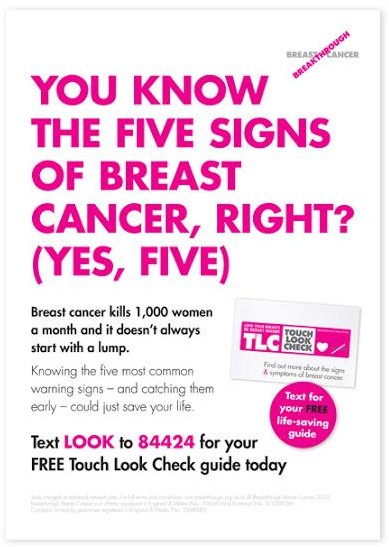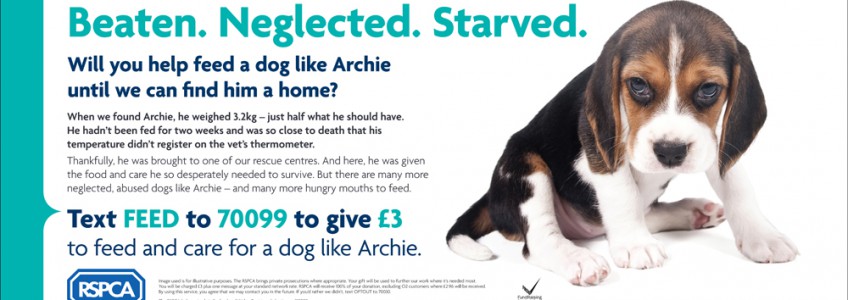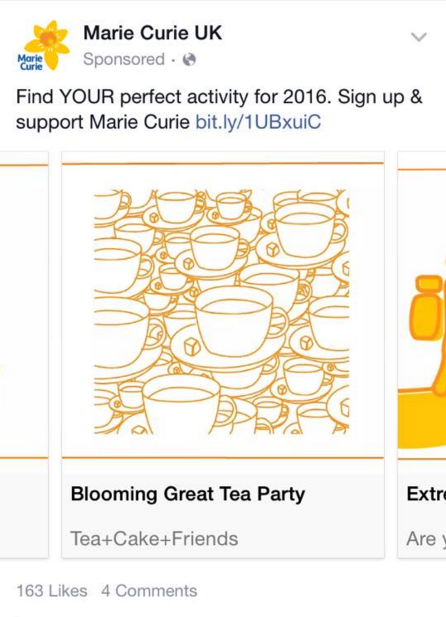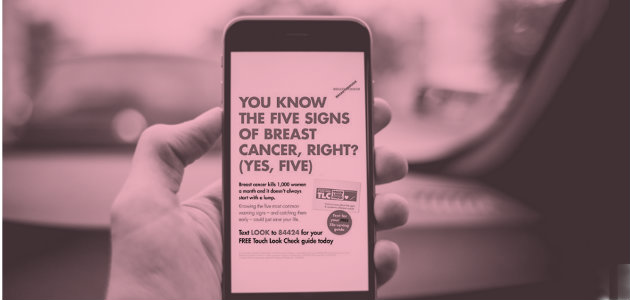Estimated reading time: 2 mins 40 secs
In the 19th century, Thomas J. Barratt created a campaign for Pears Soap, thought by some to be the first advertising campaign. It centred around the delightfully direct (and very successful) slogan:
“Good morning. Have you used Pears’ soap?”
Ever since then, brands of all kinds have used print, TV and now online advertising to sell soap, cars and literally anything else you can think of.
But advertising doesn’t half get a bad rap. Money-grabbing, soul-destroying – never life saving.
And that’s what it can be.
Lives can be lost from a lack of information. Advertising spreads information and inspires action. So…
Advertising saves lives
Catching cancer at a treatable stage saves lives. I’m willing to bet that this ad saved a few lives through spreading awareness that there are five signs of breast cancer:

The headline on its own (which is all the majority of ad viewers will read) makes you stop in your tracks. Five? I need to be paying attention to this.
Here’s one from the RSPCA.

The combination of image and super succinct headline are heartbreaking.
This ad raised money – money that saved dogs’ lives.
The rise of online advertising
But things are changing in the advertising world.
Direct response ads like those above are traditionally delivered by post in the charity world (as well as tube and train). But that channel is under threat thanks to:
- the proposed Fundraising Preference Service giving people the power to stop receiving any letter from any charities
- exponentially increasing postal costs hitting ROI hard
- No Junk Mail stickers on more letterboxes by the day
In 2015, online desktop advertising (at 19.9% of all ad spend) is now second only to TV advertising (37.7%).
While it will be pushed to third by 2018, that will only be to make way for online mobile advertising.
So if your cause wants to advertise, but don’t have a seven figure budget, online is the only place to be.
Why digital advertising rules
Views are free
Many DM packs are thrown in the bin without being opened. Charities still have to pay for those packs.
What if they didn’t?
Imagine if you didn’t have to pay for printed DM unless someone opened your letter. Imagine if thousands of people could see your charity’s name and your main message on the envelope, reinforcing your name and cause, and you only paid if they opened it.
Digital advertising already has that.
Digital ads are almost always charged on a cost-per-click basis. Impressions – displays of your ad – are free. You get many free impressions for every click, and each one reinforces your name and message
And when your message is driven home on one channel, potential donors are more likely to convert on others.
Totally measurable
If you’re lucky enough to have a billboard ad campaign live, that’s awesome – but you have no idea how many people saw it.
Sure, you can guess. You might even get broadly accurate estimates.
With digital advertising, not can you see how many people viewed your ad in real time, you can see how many took action and donated – even if they didn’t do it straight away.
Simple digital tracking like UTM codes, conversion pixels and attribution funnels will show you exactly how successful each ad is, and give you a pounds and pence Cost Per Acquisition figure for the campaign, even showing the ROI of specific ads.
Totally testable
I bet your charity has a dizzying variety of products, images, headlines and target audiences. But which is the magic combination?
Offline, you just have to go with your best guess. With digital advertising, you can run them all and find out. We’ve been testing digital campaign creative for years, and we’re constantly amazed by what ends up being successful.
Take this ad from Marie Curie, an image carousel on Facebook displaying ads for different community fundraising initiatives:

From this one ad, they can find out which one is most appealing to their target audience on Facebook, and put more resources into advertising it further.
Takeaways
- Accept that charity advertising is a force for good – know that many lives have been saved and much money has been raised as a result of charity advertising
- Know which platforms work for you – find out where your target audience is online, and advertise there.
- Test it out – try a digital campaign for yourself. Decide an outcome, create a workable idea and then launch it.





